#Silurian reef fossil
Explore tagged Tumblr posts
Photo

Fossil Bryozoan Sea Floor Slab – Silurian Wenlock Limestone, Wrens Nest Dudley UK
A beautifully preserved Fossil Sea Floor Slab featuring colonial bryozoans, sourced from the Wenlock Limestone Formation and dated to the Wenlockian Stage of the Silurian period (~428–423 million years ago). This fossil originates from the iconic Wrens Nest site in Dudley, West Midlands, UK — a globally important locality and one of the UK’s most famous fossil sites.
Bryozoans, often referred to as “moss animals,” are colonial, filter-feeding marine invertebrates that flourished in Silurian reef environments. This specimen displays a dense patch of bryozoan colonies encrusting the sea floor slab, capturing the biodiversity and ecological dynamics of ancient tropical marine settings.
Fossil Type: Colonial Bryozoans (marine invertebrates)
Geological Age: Silurian – Wenlockian Stage
Formation: Wenlock Limestone Formation
Depositional Environment: The Wenlock Limestone was formed in a warm, shallow marine environment, characterised by reef systems, carbonate platforms, and high biodiversity. These conditions facilitated extensive bryozoan growth alongside corals, crinoids, brachiopods, and trilobites.
Morphological Features:
Encrusting colonies with finely detailed zooecial structures
Calcareous, branching, or sheet-like growth patterns
Preserved in original sea floor matrix with natural bedding plane
Notable:
Genuine fossil from a Site of Special Scientific Interest (SSSI)
Rich marine fossil content from a classic British Silurian locality
Excellent display specimen or educational aid
Photo shows the exact item you will receive
Authenticity: All of our fossils are 100% genuine natural specimens and come with a Certificate of Authenticity. The scale in the photo shows 1cm per square or cube – please consult the image for full dimensions.
This bryozoan sea floor slab from the Silurian reef ecosystems of Dudley offers a remarkable window into early marine life and is a striking addition to any fossil collection.
#Bryozoan fossil#Wenlock Limestone fossil#Silurian fossil UK#Wrens Nest fossil#Dudley sea floor fossil#marine invertebrate fossil#fossil colony#Wenlockian bryozoan#UK palaeontology#reef fossil slab#fossil plate#genuine bryozoan specimen#Silurian reef fossil#collector fossil
0 notes
Text
Round 2 - Chordata - Actinistia


(Sources - 1, 2)
The Sarcopterygians (“Lobe-finned Fishes”), are the last of the three groups of “fish”, and are so named for the prominent muscular limb buds (lobes) within their fins. Of the Sarcopterygians living today, they are represented by the coelacanths, lungfish, and tetrapods (including humans), who all diverged in the Silurian. These next fish are closer related to us than they are to Actinopterygiians.
The class Actinistia, the “Coelacanths”, are an ancient group of fish that have been around since the Devonian but today are only represented by two remaining species: The West Indian Ocean Coelacanth (Latimeria chalumnae) and the Indonesian Coelacanth (Latimeria menadoensis).
Coelacanths can live as deep as 700 m (2,300 ft) below the sea, but are more commonly found at depths of 90 to 200 m (300 to 660 ft). They have sensitive eyes which include a tapetum lucidum and many rods which help them see better in dark water, as they are most active at night. They are opportunistic hunters, feeding on cuttlefish, squid, snipe eels, small sharks, and other fish found around their deep reef and volcanic slope habitats. Their abundance of fins allow for high maneuverability, and coelacanths can orient their body in almost any direction in the water. They have been seen doing headstands as well as swimming belly up. They are able to slow their metabolisms at will, sinking into less-inhabited depths and going into a hibernation mode to conserve energy.
Coelacanths are ovoviviparous, with the female retaining the fertilized eggs within her body while the embryos develop over a gestation period of five years. The female will give live birth to around 5-26 young. Young coelacanths resemble the adult, but carry an external yolk sac below their pelvic fins, and have larger eyes relative to body size. Individual coelacanths may live as long as 80 to 100 years.
Coelacanths get their name from Coelacanthus, a genus of Permian coelacanths and the first coelacanths to be described. Over 100 fossil species are known, and all of them were believed to have gone extinct in the Cretaceous. On December 23, 1938, the first Latimeria specimen was discovered among the catch of a South African fisherman, making coelacanths a “lazarus taxon.” While previously considered a “living fossil”, coelacanth body shapes were much more diverse in the Early Triassic, and Latimeria is not known from fossils, showing that it had to have gone through some changes to adapt to the modern day.

Propaganda under the cut:
Since there are only two living species in this class and both are threatened, this is the most endangered class of animals in the world.
Coelacanths get along with other coelacanths, though they recoil from physical touch. Scientists think that they recognize each other via electric communication.
Mawsonia was one of the largest known coelacanths, with one specimen estimated at over 5 m (16 ft) long. It lived from the Late Jurassic to Mid-Cretaceous.
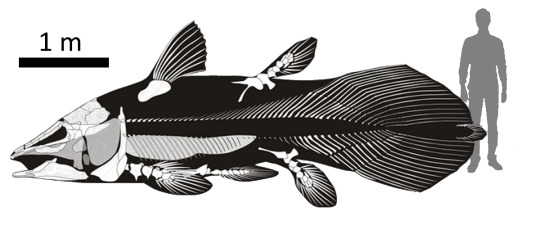
(source)
90 notes
·
View notes
Text
Monday Musings: The Beginnings of Mountains
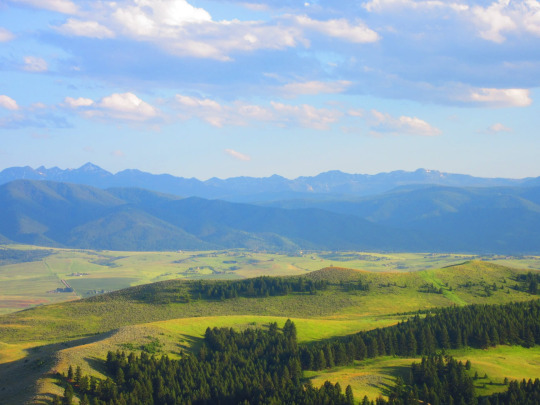
The Silurian Period started at the end of the Ordovician Period 443.8 Ma and ended at the beginning of the Devonian Period 419.2 Ma. This was a time of rising seas as the Ordovician glaciers melted. If you recall, these glaciers caused a mass extinction. Because sea level rose so much, new marine environments were created including many warm shallow seas as deep ocean basins closed because continents were moving closer together. These warm shallow seas allowed the first coral reefs to form.
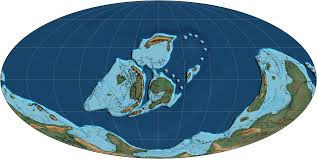
At the beginning of the Silurian Period, a large ocean sat over the north pole while Gondwana was still over the south pole. Fragmented landmasses such as Laurentia, Avalonia, and Baltica hovered around the equator.
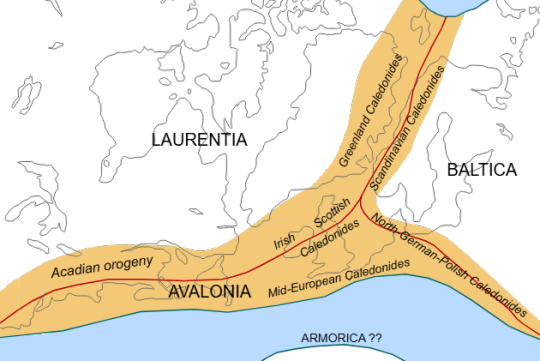
There wasn’t a huge variety in topography but there was a significant mountain-building event throughout the entire period. The Caledonian Orogeny, named for the Latin name of Scotland, was the convergence of Avalonia, Baltica, and Laurentia. This happened in a series of phases: the Grampian Orogeny, the docking of Eastern Avalonia with Baltica, the Scandian phase and the Acadian Phase.
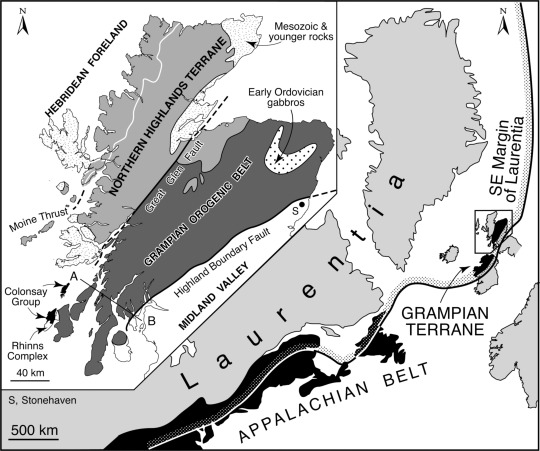
The Grampian Orogeny was the result of Laurentia (North America) colliding with an ocean island arc (Scotland and northern/western Ireland). This collision actually occurred in the middle Ordovician at about the same time as the Taconic Orogeny, an early mountain-building event in New England that began the Appalachians.
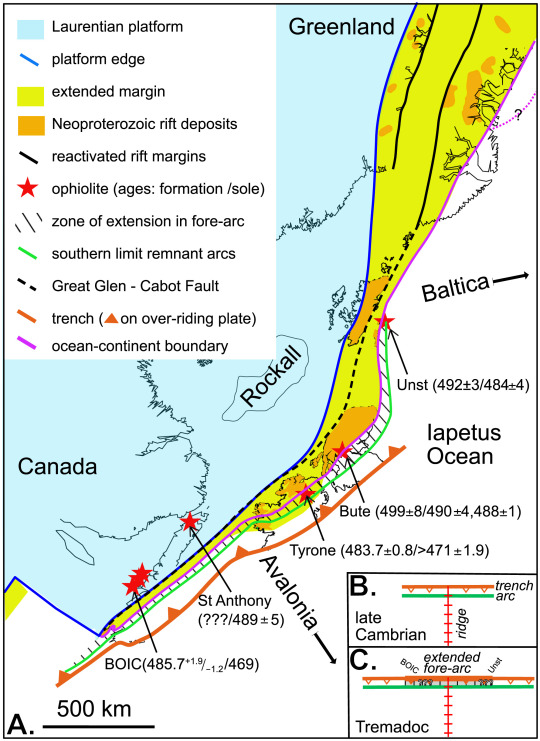
At the end of the Ordovician, eastern Avalonia and Baltica collided in a more gentle convergence called a docking. This created what is called the Trans-European Suture Zone from the North Sea close to Denmark, through part of the Baltic Sea and Poland, then follows the Eastern Carpathian Mountains of Ukraine to the Black Sea.
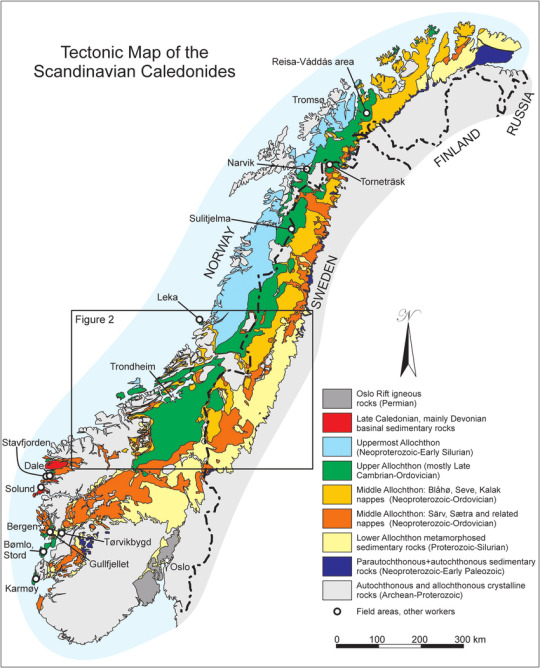
During the early Silurian until the mid-Devonian, the Scandian phase occurred. This was the result of the Fennoscandian peninsula colliding with Greenland. It also created thrusting in the Northern Highlands of Scotland and the Outer Hebrides.
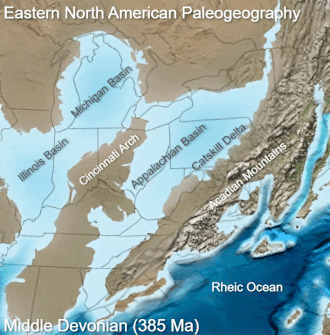
The last phase occurred during the Devonian Period. The Acadian Orogeny was the final mountain-building event for the Appalachian Mountains. It also involved connecting England and Wales to the rest of Great Britain (they were part of Avalonia rather than the island arcs).

Altogether, this orogeny was the start of building the great Central Pangean Mountains that would exist from the Carboniferous through the Triassic.
Thanks for coming to today’s lesson and tune in tomorrow to participate in some trivia! Fossilize you later!

#fun facts#geology#science education#science#plate tectonics#silurian#paleogeography#orogeny#acadian orogeny#caledonian mountains
17 notes
·
View notes
Text
Yes Maids UK: Professional Cleaning Services in Wren's Nest Estate, DY
Wren's Nest Estate, located northwest of Dudley town centre in the West Midlands, is a residential area with a rich history. Developed between 1934 and 1939, the estate was established to rehouse families from town centre slum clearances. A notable landmark in the vicinity is the Wren's Nest National Nature Reserve, renowned for its exceptional geological significance and well-preserved Silurian coral reef fossils. This reserve attracts geologists and nature enthusiasts from around the world.
Maintaining cleanliness in both residential and commercial spaces is essential for the well-being and comfort of Wren's Nest Estate residents. Yes Maids UK offers a comprehensive range of cleaning services tailored to meet these needs:
Deep Cleaning: An intensive cleaning service that reaches the deep grime and dirt in your home or office, ensuring a spotless environment.
Commercial Cleaning: Customized cleaning solutions for businesses, ensuring a clean and professional setting for employees and clients alike.
End of Tenancy Cleaning: Specialized cleaning services designed to meet the requirements of landlords and tenants, ensuring properties are immaculate at the end of a lease.
After Builders Cleaning: Post-construction cleaning to remove dust, debris, and any residual materials, leaving your new or renovated space pristine.
For residents and businesses in Cleaning Services Wren's Nest Estate seeking reliable and professional cleaning services, Yes Maids UK is ready to assist. Contact us today to schedule a service or to learn more about how we can meet your cleaning needs.
Contact Information:
Phone: +44 7387 660299
Website: https://yesmaids.co.uk/
Google Maps: Find Us on Google Maps
Yes Maids UK is committed to delivering exceptional cleaning services to the Wren's Nest Estate community, ensuring your spaces remain clean, healthy, and inviting.
0 notes
Text



Crinoids in the Sahara Desert
Millions of years ago the Sahara Desert was a shallow sea. Within the warm waters were ammonites, trilobites, and reefs systems of crinoids. During the Silurian Period of Morocco, crinoids (krī’-noids) were plentiful and diverse, and lived in densely packed “forests” in the warm, shallow Silurian seas. Crinoids are one of several classes of Echinoderms (i-kī’-neh-derms), a group of spiny-skinned animals that have radial symmetry, and include starfish. Their name is derived from the Greek word krinon (lily) due to the flowery appearance of a crinoids bodily parts — the calyx, stem and holdfast — the visual equivalent of a flowering head, stem and root — but don’t be fooled! Crinoids are animals.
As the crinoids died, their bodies accumulated on the seafloor and were covered by sediment with vast numbers, becoming fossilized. One of the most famous of these fossil-bearing deposits is between south-eastern Morocco and Algeria. Locals make a living by Excavating an underground reef of the crinoid Scyphocrinites, like the one in our collection. Vertical, hand-excavated pits are dug and from there horizontal galleries are extended to reach Scyphocrinoids. Fossils are extracted one fragment at a time and reassembled outside.
You can see this fossil at the Southern Minnesota Museum of Natural History in Blue Earth, Minnesota! Click here for more information!
#crinoid#fossil#science education#southern minnesota museum of natural history#museum#natural history#paleontology
0 notes
Text
Living in the Paleozoic Era 🌿🦕🌏
Welcome to a journey back in time to the Paleozoic Era, a period of Earth's history that spans from about 541 million to 252 million years ago. It's a time of ancient landscapes, bizarre creatures, and dramatic geological changes. Let's dive into what life was like during this fascinating era!
🌍 Ancient Supercontinents: During the Paleozoic Era, Earth looked quite different from what we know today. The landmasses were joined together in the supercontinent Pangaea, surrounded by a vast Panthalassa Ocean.
🌋 Volcanic Activity: Volcanoes were a common sight, and they released massive amounts of greenhouse gases, creating a warm, tropical climate. Sea levels were much higher, with shallow seas covering large portions of the continents.
🌿 The Dawn of Life: Life was thriving, but it was vastly different from the species we see today. The first land plants appeared, bringing greenery to the barren landscapes. These early plants laid the foundation for terrestrial ecosystems.
🐚 Marine Wonders: The oceans were teeming with life. Ancient creatures like trilobites, nautiloids, and jawless fish ruled the seas. Corals began building reefs, while the first fish with jaws emerged.
🦗 Invasion of Land: One of the most significant events of the Paleozoic was the colonization of land. Arthropods, like millipedes and scorpions, were among the first to venture onto the continents. They were soon followed by amphibians.
🌅 Mass Extinctions: The era was marked by multiple mass extinctions, including the Ordovician-Silurian and Permian-Triassic extinctions. These events shaped the course of life on Earth and paved the way for new species to evolve.
🦕 The Age of Reptiles: By the late Paleozoic, reptiles had emerged, including the iconic sail-backed Dimetrodon. These reptiles were the ancestors of the dinosaurs that would dominate the next era.
🌄 The End of an Era: The Paleozoic Era came to a close with the Permian-Triassic extinction, the most devastating in Earth's history. It wiped out nearly 95% of marine species and marked the end of many Paleozoic life forms.
Today, we marvel at the remnants of the Paleozoic Era, from the fossils of trilobites to the geological formations that tell the story of this ancient world. Studying this era helps us understand the evolution of life on Earth and the forces that have shaped our planet.
#PaleozoicEra#AncientEarth#LifeOnLand#MassExtinctions#PrehistoricCreatures#GeologicalHistory#FossilHunting#EvolutionaryTimeline#DawnOfLife#ReptilianWorld#Paleontology#AncientLandscapes#GeologicalWonders#EarthHistory#SailBackedReptiles#Pangaea#PrehistoricPlants#AncientOceans#TriassicEra#PermianExtinction#Trilobites#Amphibians#VolcanicActivity#PanthalassaOcean#Arthropods#FossilRecord#PrehistoricClimate
0 notes
Text
Did you Know
Mammal bias isn't the only one when it comes to researching nature and deep time?
There are more!
There is also time bias! As I have discussed with @quark-nova, Essentially, because the more recent something is the easier it is to learn about - more remains of things, more details from the rocks, etc. - we also have ridiculous amounts of bias towards more recent times. This is clearest when it comes to the traditional geologic time scale - the further back you go, the longer time periods are, and nothing is divided particularly evenly. I would even say the "anthropocene" is the biggest offender in this - if we zoomed out from today to a hundred million years ago, all of the extinctions and chaos of the past 2.5 million years would get lumped together into one big mass extinction, not separated out into nitty gritty and frankly narcissistic time slices.
Then there is geographical bias! You'd think people studying the whole biosphere wouldn't have this, but we do! Thanks to *colonialism!* The geologies of North America and Europe are significantly better studied than the rest of the world, which is fighting hard to catch up. This even extends to our knowledge of modern life, with many new species still being discovered in "the global south" (I personally prefer the term Gondwana, but what can you do). And we have no one to blame for that but ourselves.
And another one is land bias! Because we are land organisms, we tend to think about land ecosystems more than oceanic ones - in fact, the ocean only really gets enough time on it in the early stages of life, everything before the Silurian, because there isn't a land ecosystem to focus on more! But the oceans are just as influential in our past - honestly, moreso - than land ecosystems, even today - think about how much El Niño affects us all! But how many people know about the end cretaceous extinction, and not the mesozoic marine revolution? How many people know that reefs at the end Cretaceous were just, made by bivalves for some reason? The list goes on.
Then there's the one most people know about already - megafaunal and charismatic bias! This often goes hand in hand with mammal bias, but essentially, because we ourselves are megafauna - I know we specifically define megafauna to exclude humans, but how the hell is that logical - we operate on a big scale, at any rate - we tend to favor megafauna in our knowledge of the past and our understanding of life. And, if its not megafauna, it at least has to be charismatic - cute, extra weird maybe, or familiar. This affects modern research so much, especially conservation and research funding - not just paleo, but also neontological work. Charismatic Megafauna get everything, and everyone else gets scraps.
This is just the tip of the iceberg! All scientists bring in bias - that's why we need as many scientists as possible, so we have as many perspectives as possible to come up with the most parsimonious and universal view of nature - but some biases are fairly universal for humans and need to be murdered in our heads by all of us. Why did Wingspan and Holotype both start with North America when the best birds are in South America and the best fossil dinosaurs are in Asia? The list is infinite.
The biases we have because of the way history has played out, the way preservation works, and because of what kind of organisms we are as humans, are ones we all have to work to disassemble and deconstruct in our brains. The more we do so, the more we can look at the big picture, understand our entire biosphere, and work together to protect it.
Plus, imagine how much cool stuff we'll learn about when we finally take the time to do so.
We have nothing to lose but our chains.
310 notes
·
View notes
Text
From Collector to Director
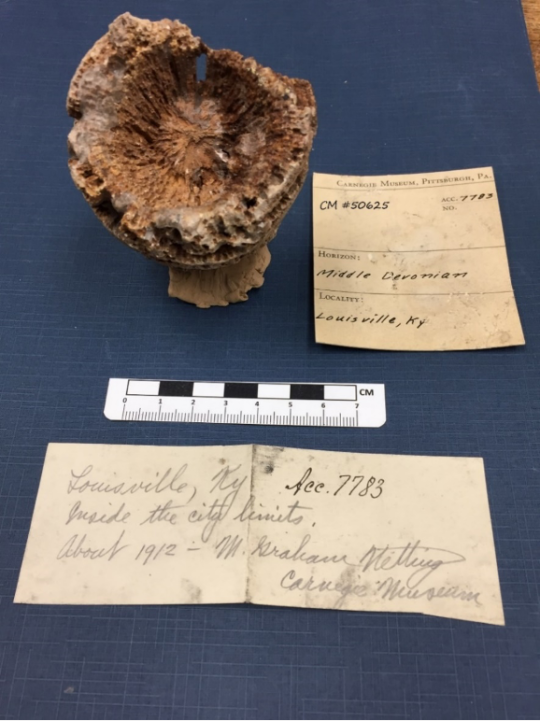
Figure 1: CM 50625 – Rugosa Coral. Collected by M. Graham Netting in 1912. Coral body shape has a radial symmetry.
In 1912, eight-year-old M. Graham Netting unearthed 13 coral fossils within the city limits of Louisville, Kentucky. Later, as a 22-year-old Pitt student, he donated them to the Carnegie Museum of Natural History (Figure 1). When the Great Depression cut short his graduate studies at the University of Michigan in 1929, he returned to the museum as Assistant Curator of Herpetology, and worked his way up to Curator in 1932. In 1954, six months before turning 50, he was appointed Director of the Carnegie Museum of Natural History. Along the way, the Wilkinsburg native left an astonishing legacy that includes a steady growth in scientific collections, numerous wildlife dioramas in the Halls of Wildlife, and a mid-Appalachian field research station, Powdermill Nature Reserve. Upon his retirement in 1975, the Post-Gazette noted, “Long before it was “in,” Netting saw pollution of the air and water ravaging the land.”
Albert Kollar, Collection Manager of the of Section of Invertebrate Paleontology, re-discovered young Graham Netting’s horn corals while working on a multiyear review of the Bayet Collection. Netting’s label note did not provide any evidence for the stratigraphic unit that he collected from, but more on that later.
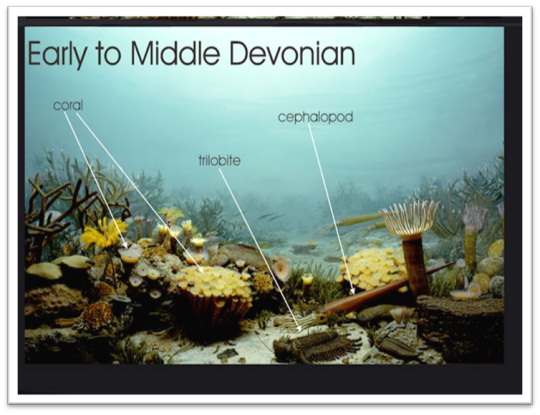
Figure 2: Carnegie Museum of Natural History exhibit reconstruction of an Early to Middle Devonian reef, 375 - 390 MYA. The reef shows Rugosa and Tabulate corals, a spiny trilobite about 18 inches in length and several straight cephalopods. Coral tentacles (shown in white) are illustrated in feeding mode. Both Rugosa and Tabulate corals went extinct at the end of the Permian Period.
Rugose corals are often called horn corals because many species have a horn shape. Horn corals attach to the sea floor by way of a sticky tentacle that protrudes from the base or curved end of the animal. Other invertebrate animals, such as brachiopods, attached in this position are described as sessile. The coral animal or “polyp” built its skeleton from calcium carbonate, a mineral formed from Bicarbonate and Calcium ions in seawater. The polyp tentacles or feeding polyp extend out from the top of the basic body for feeding (Figure 2). When the animal died, its soft tissues would have decayed and left behind the external hard mineral skeleton that fossilized.
Netting’s Louisville coral specimens are fossilized in a different way than similar corals from the nearby Falls of the Ohio middle Devonian fossil beds. His corals are lighter and fragile to the touch, conditions which gave Albert reason to compare Netting’s fossils to similar invertebrate paleontology corals from strata within the Louisville area. Sometime during or after burial, these horn coral skeletons were replaced by silica or quartz, a process known as silicification. The mineral silica can saturate a column of seawater when the seabed is overwhelmed with a large population of sponges. Sponge skeletons are composed of silica and when they die silica is added to a column or more of seawater. Volcanic eruptions eject silica into the atmosphere that eventually settles into the sea. ��Again potentially adding higher amounts of silica. Whatever the cause, Albert believes Netting’s corals were collected from the fossiliferous Middle Devonian age Jeffersonville Limestone, where the “lower foot of a “conglomerate” of reworked silicified Louisville Limestone” of Upper Silurian age is known to occur with silicified coral fossils (Conkin and Conkin, 1972).
Horn and Tabulate corals thrived in shallow seas forming diversified ecological reefs from about the late Silurian Period to the beginning of the Late Devonian epoch. During the Middle Devonian epoch roughly 400 Ma to 390 Ma years ago, reefs formed in central New York, southern Ontario, central Ohio, central Iowa, western Alberta, Canada, western Australia, and in Eifel, Germany.

Figure 3: Paleogeographic Map of the Middle Devonian Period – Kentucky is well south of the equator.
Louisville, during the Devonian Period, was centered in the southern hemisphere about 40 degrees south of the equator. Because of plate tectonics, the coral beds of Louisville would travel 5,500 miles over the next 390 million years to their present-day location of 38 degrees north (Figure 3). Today, fossil outcrops in the city limits of Louisville are difficult to find.
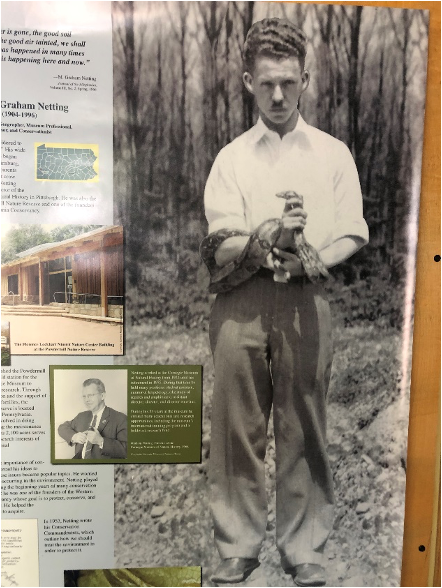
Figure 4: Graham Netting in his twenties.
When Netting retired as Director of Carnegie Museum of Natural History, he moved to a modest house next to Powdermill Nature Reserve. A seat was saved for him each Sunday at the reserve’s weekly nature talk. In 1996, he passed away. Steve Rogers, Collections Manager for the Section of Birds, recalls sipping fresh lemonade on Netting’s back porch in 1981. According to Rogers, Netting was reflective and humble. The fossil collector who became a museum director had a habit of rubbing his chin while listening to someone speak. When asked about his legacy, Rogers replied, “He was more instrumental in forming Powdermill than anyone. He had an amazing ability to be a part of a team that got things done.”

Figure 5: Graham Netting at Retirement in 1975.
As Netting prepared to step down as director in 1975, he said, “These great collections are a natural resource to answer questions about the life of the world.” On a recent day, I saw two children jumping up and down in front of the Glacier Bear diorama in Hall of North American Wildlife on a family visit to the museum. When one of the children asked, “what’s a diorama?” I thought about Graham Netting, smiled, and encouraged their engagement with the life of the world.
Many thanks to Xianghua Sun, Carnegie Museum Library Manager, Marie Corrado, Carnegie Museum Library Clerk, Stephen Rogers, Collections Manager for the Section of Birds, and John Wenzel, Director of Powdermill Nature Reserve for help researching this post.
Joann Wilson is an Interpreter in the Education Department at Carnegie Museum of Natural History and Albert Kollar is Collections Manager for the Section of Invertebrate Paleontology. Museum employees are encouraged to blog about their unique experiences and knowledge gained from working at the museum.
#Carnegie Museum of Natural History#Graham Netting#Wildlife diorama#Pittsburgh#Natural History#Powdermill Nature Reserve#Horn coral#Rugose coral#Louisville
42 notes
·
View notes
Photo

Fossil Bryozoan Sea Floor Slab – Silurian Wenlock Limestone, Wrens Nest Dudley UK
A beautifully preserved Fossil Sea Floor Slab featuring colonial bryozoans, sourced from the Wenlock Limestone Formation and dated to the Wenlockian Stage of the Silurian period (~428–423 million years ago). This fossil originates from the iconic Wrens Nest site in Dudley, West Midlands, UK — a globally important locality and one of the UK’s most famous fossil sites.
Bryozoans, often referred to as “moss animals,” are colonial, filter-feeding marine invertebrates that flourished in Silurian reef environments. This specimen displays a dense patch of bryozoan colonies encrusting the sea floor slab, capturing the biodiversity and ecological dynamics of ancient tropical marine settings.
Fossil Type: Colonial Bryozoans (marine invertebrates)
Geological Age: Silurian – Wenlockian Stage
Formation: Wenlock Limestone Formation
Depositional Environment: The Wenlock Limestone was formed in a warm, shallow marine environment, characterised by reef systems, carbonate platforms, and high biodiversity. These conditions facilitated extensive bryozoan growth alongside corals, crinoids, brachiopods, and trilobites.
Morphological Features:
Encrusting colonies with finely detailed zooecial structures
Calcareous, branching, or sheet-like growth patterns
Preserved in original sea floor matrix with natural bedding plane
Notable:
Genuine fossil from a Site of Special Scientific Interest (SSSI)
Rich marine fossil content from a classic British Silurian locality
Excellent display specimen or educational aid
Photo shows the exact item you will receive
Authenticity: All of our fossils are 100% genuine natural specimens and come with a Certificate of Authenticity. The scale in the photo shows 1cm per square or cube – please consult the image for full dimensions.
This bryozoan sea floor slab from the Silurian reef ecosystems of Dudley offers a remarkable window into early marine life and is a striking addition to any fossil collection.
#Bryozoan fossil#Wenlock Limestone fossil#Silurian fossil UK#Wrens Nest fossil#Dudley sea floor fossil#marine invertebrate fossil#fossil colony#Wenlockian bryozoan#UK palaeontology#reef fossil slab#fossil plate#genuine bryozoan specimen#Silurian reef fossil#collector fossil
0 notes
Text
A continuation of the past
There is no peculiar merit in ancient things, but there is merit in integrity, and integrity entails the keeping together of the parts of any whole, and if these parts are scattered throughout time, then the maintenance of integrity entails a knowledge, a memory, of ancient things. …. To think, feel or act as though the past is done with, is equivalent to believing that a railway station through which our train has just passed, only existed for as long as our train was in it.
(Edward Hyams, Chapter 7, The Gifts of Interpretation)

This is a picture of a ‘quarry’, which some of you may have seen before. It’s located off Stone Rd next to the Eramosa River, between Victoria and Watson, and there are a set of trails around the area. I experienced it for the first time during a field trip for Principles of Environmental geology – the open face allows us to look at the layers of Silurian rock and make out fossils from the shallow reef that used to be in Guelph long before Guelph arrived. I say ‘quarry’ because the area is the site of a former prison. This face was carved out by prisoners.
It is impossible to find yourself somewhere that hasn’t been touched by the past. Not only is the past inherently connected to the nature itself, but also the ways in which we are able to experience and interpret it today. As stated in the text, a “…reason to interpret history is to remember. To remember not only the happy stories of our past, but also the tragic ones… Keeping memories alive may be the most significant role of history interpreters,” (Beck et al, 2018). While this quote may be in reference to the atrocities of our history, it is also important to think about how the ugly side of our past contributes to our modern interpretation of nature.
Beck et al (2018) goes on to discuss characteristics of authenticity in historical interpretation. Objective authenticity being tied to original artifacts and historic buildings, with constructed authenticity being tied to historical interpretation in a constructed space. While the reading goes on to discuss natural authenticity as its own spiritual aspect, I think that the previously described principles can easily be applied to modern interpretation of nature. Think about how many parts of nature people are only able to experience in a constructed setting. Take a second to consider zoos, nature documentaries, and other methods of which most people see the ‘exotic’. Do you think these are authentic natural experiences?
While I appreciate these resources, they offer a constructed form of reality – the main concern of which is their inability to properly appreciate the past. When you walk into a zoo you are met by messages of conservation and protection, with little information on the modern destruction of ecosystems around the world which led to the collapse of species that necessitate conservation efforts. It is, in many parts, a failure to acknowledge the ugliness of our past – that this very experience of marveling at the unknowns of faraway places is in part why practices like poaching and game-hunting became popular at the hands of the Western world. I will admit that doing so would not be very kid-friendly, but it is still a failure to create an experience that admits to the weight of the devastation that rests on our shoulders.
And it is important to recognize that it does rest on our shoulders, as consumers who benefit from the debts paid by the natural environment. While we are not responsible for decisions made in the past, we are still a continuation of people who came before. If the situation we are presented with is dire, we should be the first to treat it as such.
In the context of nature interpretation and how I view it, that is what I take away from the quote – to not be caught up and fascinated by things that existed previously or shrug them off as something that can only exist in memory. There was natural heritage that existed before that does not today, but that should serve as a motivation for today’s conservation rather than a distraction. We must do what we can with what we’ve been given, lest today’s nature be forgotten tomorrow.
Beck, L., Cable, T.T., & Knudson. D.M. (2018). Interpreting cultural and natural heritage for a better world. Sagamore-Venture.
0 notes
Text
Round 2 - Chordata - Actinopterygii

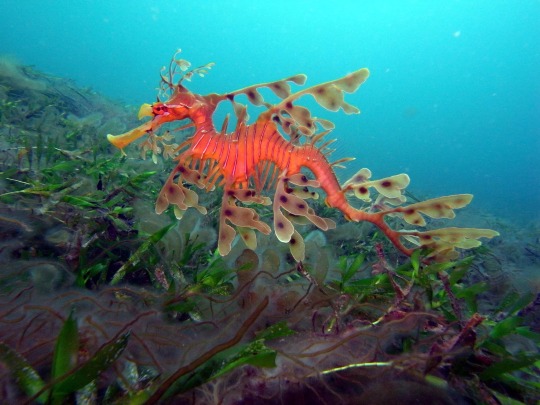


(Sources - 1, 2, 3, 4)
Over 50% of chordate species are Actinopterygians (“Ray-finned Fishes”). There are over 30,000 species, comprised of the Polypteriformes (“Bichirs” and “Reedfish”), Acipenseriformes (“Sturgeons” and “Paddlefish”), Amiiformes (“Bowfins”), Lepisosteiformes (“Gar”), and the Teleosts (about 40 orders containing all rest of the actinopterygians).
Ray-finned Fishes are so called because of their lightly built fins made of skin webbings supported by thin bony spines. Actinopterygians are unique for their swim bladder, an organ that allows them to adjust their buoyancy. They are the most abundant free-swimming aquatic animals and can be found almost anywhere there is water. They come in a vast majority of sizes, shapes, scale-types, fin-arrangements, colors, and behaviors, from the 8 mm (0.3 in) long Paedocypris to the 11 m (36 ft) long Giant Oarfish (Regalecus glesne) to the 2,744 kg (6,049 lb) Giant Sunfish (Mola alexandrini). They have feeding strategies ranging from predatory to grazing to filter-feeding.
In most actinopterygians, males and females exist and reproduce through external fertilization. However, some species utilize sequential hermaphroditism, in which they start life as females and convert to males at some point. In a few species, they start life as males and convert to females. Some species give live birth, and some species self-fertilise. Some abandon their young, while some practice maternal and/or even paternal care.
The earliest known actinopterygian is Andreolepis hedei, from the Late Silurian. The teleosts in particular diversified wildly during the Mesozoic, resulting in the high diversity of shapes we see today. The earliest fossil relatives of modern teleosts, (Prohalecites and Pholidophorus), are from the Triassic period, though it is suspected that teleosts originated already during the Paleozoic Era.
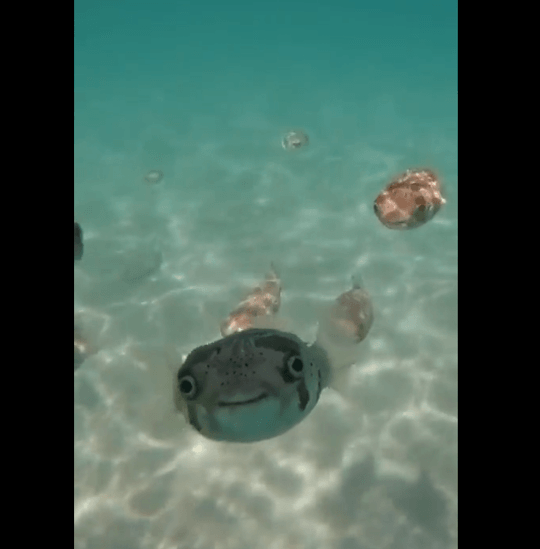
Propaganda under the cut:
Many Actinopterygians, especially those that live in the deep sea, are bioluminescent, glowing in a variety of colors and patterns to attract prey, mates, or even just communicate.
Some species of Puffer Fish (Family Tetrapdontidae) are highly poisonous, second only among vertebrates to the Golden Dart Frog (Phyllobates terribilis).
The most venomous fish is the Reef Stonefish (Synanceia verrucosa). The spines on its back produce a venom which can cause severe pain, shock, paralysis, and tissue death in humans.
Male Seahorses (Genus Hippocampus) are known for having a pouch in which they carry eggs laid by the female.
The Harlequin Tuskfish (Choerodon fasciatus) has electric blue vampire teeth.
Speaking of teeth, Serrasalmids have jaws ranging from human-looking nutcracker teeth to bear-trap looking flesh-eating chompers.
The Mandarinfish (Synchiropus splendidus) and the Picturesque Dragonet (Synchiropus picturatus) are the only two vertebrate species known to produce their own true blue coloring. Blue as a color is usually a result of reflected light, and almost all cells that are perceived as blue are actually a reflective black. However, these two mandarinfish species have cyanophores, which are both blue in pigment and reflective, making them the most blue animals in nature.
Many fish are popular in the pet trade (some more ethical pets than others) and some have even been domesticated and bred to display a variety of colors and shapes, including goldfish, koi, Betta, and zebrafish.
Moray Eels (family Muraenidae) have a hidden set of internal jaws, called pharyngeal jaws. While most predatory fish use suction to “inhale” their prey, moray eels just… pull them in.
The Mangrove Rivulus (Kryptolebias marmoratus), a species of killifish, mostly breeds by self-fertilization and can survive for about two months on land. Males are rare, and can only hatch from eggs kept below 19 °C (66 °F).
The most famous pupfish (family Cyprinodontidae, also a type of killifish) is probably the Devils Hole Pupfish (Cyprinodon diabolis). It is a critically endangered species found only in Devil’s Hole, a water-filled cavern in the US state of Nevada. When nearby agricultural irrigation caused the water to drop in the cavern, several court cases ensued, resulting in Devils Hole being declared a National Monument in 1952, including the preservation of adequate groundwater to maintain the pool. As of September 2022, the count showed a total of 263 observed wild pupfish, up from only 35 in 2013.
There are waaaay too many cool fish for me to write about; I keep thinking of cool facts but this is already getting so long and I gotta save some for if this class makes it to the next round 🥲
103 notes
·
View notes
Photo

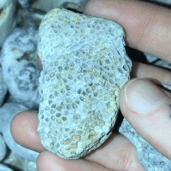
Honeycomb favosite coral fossil coated in druzy quartz 😍
“Favosites, like most coral, thrived in warm, shallow sunlit seas. They were a colony type of coral forming colorful quilt work reefs. They fed by filtering microscopic plankton with their stinging tentacles. They were most prevalent during the Silurian and Devonian time slots, but date as far back as the Ordovician and forward to the Permian between 251-488 mya. That’s over 200 million years of living on earth … amazing!”
https://fossillady.wordpress.com/tag/honeycomb-coral/
Do not repost elsewhere reblogs only
#gif#coral fossil#fossil coral#honeycomb coral#coral#favosite#fossil#beach fossil#ordovician#devonian#silurian#geology#paleontology#rock collection#rock hound#druzy#druzy quartz#quartz#fossil hunter#beachcomber#beach pebble#beach rock
9 notes
·
View notes
Photo

#halysites aka #chaincoral The perfection of this fossilized find is astounding! It’s size, detail and lacing is really an incredible example of nature’s magic. ✨ Imagine teeny tiny reef flowers peeping out of every little hole during its glory days on the Silurian Reef 🤩 • • • • • #greatlakeslocals #greatlakesproud #discoverwisconsin #wegowisco #Wisconsin #beachfind #seagift #beachcomber #beachcombing #seaglasshunting #fossils #fossil #fossilhunting #rockhounding #fossilized #lakemichiganfossils #lakemichigan #greatlakes #beachtreasures #fossilsofthegreatlakes #treasuresfromthesea #naturetreasures #silurian #silurianperiod #400milllionyearsold #prehistoric #oldshit https://www.instagram.com/p/B1yge0IBFdU/?igshid=1ka2xr8gsy5ax
#halysites#chaincoral#greatlakeslocals#greatlakesproud#discoverwisconsin#wegowisco#wisconsin#beachfind#seagift#beachcomber#beachcombing#seaglasshunting#fossils#fossil#fossilhunting#rockhounding#fossilized#lakemichiganfossils#lakemichigan#greatlakes#beachtreasures#fossilsofthegreatlakes#treasuresfromthesea#naturetreasures#silurian#silurianperiod#400milllionyearsold#prehistoric#oldshit
1 note
·
View note
Text
New Post has been published on Biology Dictionary
New Post has been published on https://biologydictionary.net/extinction-event/
Extinction Event
An extinction event, or mass extinction, is a period of time in which a considerable portion of the world’s biodiversity is lost. An extinction event can have many causes, and can vary in intensity. There have been at least 5 major extinction events since the Cambrian explosion, each taking a large portion of the biodiversity with it. As seen in the graph below, these extinction events punctuate the fossil record. The following graph shows the intensity of extinction over time, which is a gradual and constant process. The spikes represent significant extinction events.
The highest bar represents the Permian-Triassic extinction event, which wiped out almost half the species on Earth in less than a million years. One ultimate reason that an extinction event may occur is the interdependent nature of food webs. If one species suffers and goes extinct, it often means changes for other species. As more and more species fall prey to the extinction event, the food web collapses and must be rebuilt from the bottom up. Oftentimes, a change in the Earth such as weather patterns will cause the extinction event. Other times, a species or group of species will change the environment and drive the extinction event.
Major Extinction Events
Ordovician-Silurian Extinction Event
One of the oldest mass extinctions, this extinction event occurred nearly 450 million years ago. At the time, many forms of multicellular life roamed the ocean. Just before this extinction event, many changes were happening. For instance, land plants had emerged, and were likely changing the composition of the atmosphere. In doing so, they shifted the balance from a carbon dioxide rich atmosphere to an oxygen rich atmosphere. Theoretically, this could have dramatically cooled the planet.
As much of the diversity of life was found within the oceans at this time, it suffered greatly as the planet cooled. As glaciers formed, sea levels fell. Many habitats on coastal areas were assumed to be destroyed as this happened. The change in atmosphere and global weather patterns ended up killing off up to 50 percent of the genera, and eliminating many marine species. Those species on land and in the sea which did not go extinct to glaciation expanded greatly once the glaciers melted and temperatures stabilized. It was after this mass extinction that major families of land plants and animals exploded.
Late Devonian Extinction Event
By the next great extinction event, the glaciers had melted and land was heavily colonized by plants and insects. These two groups had expanded rapidly in the newly available niche. The marine fauna had also rebounded, becoming greatly diversified and building huge coral reefs, which we can find evidence of today. The event may in fact be a series of events, so close in time that they are not well defined in the fossil record.
The causes of the Late Devonian event are not understood well, and many hypothesis abound. It is understood that marine, warm-water organisms and early jawed vertebrates were heavily affected. In fact, almost 97 percent of all vertebrate species disappeared. At least 75 percent of all species did not survive this era. One of the causes could have been an asteroid impact, which would change weather patterns and cause glaciation and sea levels to fall. Another theory presented involves the evolution of plants. It suggests that the new forms of plants, complete with roots and mechanisms to extract nutrients, had caused a massive influx of these nutrients into the ocean. As with fertilizer running into the ocean today, the increase in nutrients would cause massive growths of algae. As these blooms expanded, they would deplete the oxygen from large portions of ocean. Other fact supporting this is that many species of vertebrate got considerably smaller after the extinction event. This suggests that there was less oxygen and prey in the water. Other causes include volcanism, which may have added greenhouse gases to the atmosphere, changing its composition.
Permian-Triassic Extinction Event
The Permian-Triassic extinction event is the largest and most severe extinction event in the fossil record. The extinction event, also called the Great Dying, is supposed to have happened around 252 million years ago. Scientist have estimated that during this time 96 percent of all marine species went extinct. Further, terrestrial vertebrates, which had just expanded for the first time, lost nearly 70 percent of living species. Over 80 percent of all the known genera disappeared after this event. In today’s equivalent, it would be like wiping out all life on Earth, minus the insects and other invertebrates. That includes plants and fungi!
In the marine environment at one archeological site in China, for instance, nearly 87 percent of all the known invertebrate marine genera disappeared. It is though that ocean acidification, as a result of increasing carbon dioxide in the atmosphere, contributed greatly to this loss. On land, things were just as bad. At the end of the Permian, insects had grown and diversified on land. Some of the largest insects to walk or fly the Earth existed in this period. Nearly all of them would be extinct by the end of the extinction event. Plant communities, while they didn’t experience the same level of extinction, went through rapid periods of fluctuation. This likely cause the extinction of many of the terrestrial vertebrates alive at the time.
The causes of this extinction, like the ones before it, are heavily debated. While it has been shown that organisms sensitive to carbon dioxide were the most vulnerable, the source of that gas is debated. As with the extinction events before it asteroids, volcanoes, and greenhouse gases are the likely culprits. Several possible impact sites of asteroids have been identified, but it is hard to date them. Further, it is more likely that an asteroid would have hit the ocean, and evidence of it would be completely gone by now. Evidence of large-scale volcanic eruptions has been found. While it is clear that there were major chemical and physical changes happening the world at a time, it is difficult to pinpoint the exact cause of the extinction event.
Triassic-Jurassic Extinction Event
This mass extinction event, while much small than the one preceding it, allowed for many niches to be cleared for the rise of the dinosaurs. This extinction event took around somewhere around 30 percent of marine species. Interestingly, this extinction event coincides with the breakup of Pangea, a supercontinent that had formed as the continents drifted together. As the continent broke apart, there were massive changes to the flora and fauna.
Unlike the other extinction events, one cause of this extinction event might have been a decline in speciation as opposed to an increase in extinction. Theoretically, there is a level of background extinction, which is always taking place. If speciation slows, because organisms can’t adapt or all the niches are full, extinction wins out. While many species were lost over this time, the causes aren’t clear. Again, asteroids and climate change are presumed to be the culprits.
Cretaceous-Paleogene Extinction Event
Probably the most well-known extinction event, the Cretaceous-Paleogene is the one which wiped out the dinosaurs and cleared the way for mammals and humans. Unlike other mass extinction events, this extinction event happened relatively recently, only 66 million years ago. Also unlike the other extinction events, scientists have a fairly good idea of what caused the massive extinction.
An asteroid crater in the Gulf of Mexico was found that dated to the time of the extinction. At over 100 miles wide, the asteroid would have been able to completely shift the global atmosphere. One of the largest extinction events known, the impact is probably responsible for the die-off of around 75 percent of all living species. The main effect of the asteroid was to produce an impact winter. Dust and debris from the impact would float in the atmosphere for years, blocking the sun. As photosynthetic organisms died off, so too would the herbivores that feed on them and the carnivores which feed on them. As such, entire food webs in both the terrestrial and marine environments were lost.
Holocene Extinction Event
The most recent extinction event is the one we are currently living through. Since our recorded history, we have witnessed, if not caused, the extinction of many species. Changes in climate, whether man-made or natural, are driving the same conditions of greenhouse gas build up and ocean acidification which have driven other extinction events in the past. According to data from organizations which monitor threatened and endangered species, we are on the precipice of another extinction event. While some dismiss this theory, we should be careful. If the food webs we are dependent on collapse, we will not be able to survive.
Quiz
1. What is the difference between extinction and an extinction event? A. Nothing B. Extinction happens to a single species, an event happens to many C. An extinction event is when an extinction happens
Answer to Question #1
B is correct. Extinction is a continual process. There is a certain level of extinction which is always happening. An extinction event occurs when a large global change causes a drastic increase in the level of extinction across many different species.
2. How can scientists determine we are entering an extinction event? A. By comparing recent trends to historical records B. By monitoring the extinctions we see today C. All of the above
Answer to Question #2
C is correct. Based on the number of species going extinct, compared to the number we are away of, it seems that the extinction rate is much higher than normal. When we start to look at the types of species going extinct today, the link between historical causes and current human activity become clearer.
3. Your friend argues that a mass extinction would not affect humans, because we are so technologically advanced. Is he right? A. Yes B. No C. It depends
Answer to Question #3
C is correct. It truly depends on the scale of the extinction and the extinction event itself. Already, humans have replace the majority of vertebrate life with themselves and their agricultural animals. If gas emissions and the greenhouse effect eventually lead to another ice age or global temperature spike, we are in trouble. If plants can’t survive, we can’t survive.
References
Feldhamer, G. A., Drickamer, L. C., Vessey, S. H., Merritt, J. F., & Krajewski, C. (2007). Mammology: Adaptation, Diversity, Ecology (3rd ed.). Baltimore: The Johns Hopkins University Press.
Pimiento, C., & Clements, C. (2014, October 22). When did Carcharocles megalodon become extinct? A new analysis of the fossil record. PLOS One. Retrieved from http://journals.plos.org/plosone/article?id=10.1371/journal.pone.0111086
Pough, F. H., Janis, C. M., & Heiser, J. B. (2009). Vertebrate Life. Boston: Pearson Benjamin Cummings.
0 notes
Text
All About the Rocks Found Around the Great Lakes
Beaches are teeming with rocks and collecting them can be fun. As a matter of fact, kids enjoy scouting the shores for rocks to bring home as a souvenir. It is also a nice way to keep them busy on the beach while having a great Michigan vacation. Children notice these tiny stones and appreciate their shapes and colors.
In each tide that comes in, the shores are renewed with pebbles, stone, and sand. Every moment in the beach offers different things to enjoy and collect.
Beach rocks are usually clean, fresh out of the sea and from their grinding in the shore. This makes beach rocks harder like igneous and metamorphic. Because waves carry rocks from shoreline to another, it is not always easy to tell where a beach rock came from. It can originate from cliffs or mountains along the beach. It may come from fragments of corals or some fossilized creature submerge somewhere in the middle of the sea. Some may have come from a far-away river or to a distant land in which the waves carried to the shore.
With all this in mind, here is a list of beach rocks and fossilized creatures you can find around the Great Lakes:
Concrete
Even in beaches, man-made concrete exist. Concrete rocks have been eroded and washed into shores from nearby islands. Grinding waves polished this type of rocks and often confused with the conglomerate rocks. Conglomerate rocks are sedimentary rocks composed of rounded gravel. It often consists of gravel combined with iron oxide, silica or hardened clay.
Crinoids
youtube
Million years ago, crinoids belong to graceful creatures of the phylum Echinodermata like starfish, sand dollars, and sea urchins. Crinoids bear similarities of underwater flowers. Crinoids used its long stalk to anchor to the sea floor. Today, you can find the disc like stones on the beach that may look like small donuts.
Granite
Granite is the best-known igneous rock on earth. It is a light colored rock with grain accents just enough to be distinguished with the naked eye. It came from below earth’s surface from slow crystallization of magma. Some volcanic eruptions might expel this type of rocks and wash ashore. Granite usually comes in colors of red, pink, gray or white with dark grain specks. Some of the best places to hunt for this rock are in the Upper Michigan Peninsula, Ontario, and Wisconsin.
Honeycomb Coral
Honeycomb coral is a type of extinct favosite coral. Known for its honeycomb patterning, it is a preserved sedimentary claystone. Coral polyps used to live in its hollow surface millions of years ago. And like most corals, this type of rocks thrived in warm and shallow parts of the sea where sunlight can penetrate the waters. Honeycomb corals predominate the Silurian and Devonian era, in which they can be found where you can find Petoskey Stones and Charlevoix Stones.
Jasper
youtube
Jasper, an opaque impure type of silica is an aggregate micro angular quart. Usually, it comes in colors of red, brown, green or yellow, in rare occasion blue. Iron deposits make Jasper predominantly red in color. When fully polished, Jasper is treated as gemstones and used in seals, vases, and as ornaments.
Petoskey Stones
youtube
Petoskey Stones are the most sought after beach rock along the shores of Lake Michigan. It is believed to flourish around 350 million years ago during the Devonian age. The biggest influx of Petoskey Stones is found in Little Traverse Bay, in where else, in Petoskey town. Each year, melted ice and wind push new supplies of Petoskey Stone along the shore during spring time. The best time to hunt for this type of rock start in summer of after a wind storm. However, finding it is more of a challenge since many visitors and beachcombers also search for this precious fossil rock.
Slag
Slags are glass-like shiny by-product separated from its raw ore. It composes of a mixture of metal oxides and silicon dioxide. In some cases, it may contain metal sulfides and elemental metals. Slags are often times produced from smelting iron and from burning coal on ships. Since steam engine boats commonly roam the Great Lakes, it may come from there.
Stromatoporoids
Stromatoporoids are organisms known for their fossilized record. Based on its structure, some considered this organism to be related to marine sponges. In fact, stromatoporoids are reef builders which are extinct stony sponges dominant in the Silurian Period 430 million years ago. Soon after they died out and went into complete extinction in the Mesozoic era.
Syringoporoids
Another extinct coral type known as syringoporoids can be found in some areas of the beach. They are described as organ pipe coral, cup coral, and crinoid columnals mostly found in upper Paleozoic rocks. Their characteristics helped distinguish formation of limestone in the Devonian era.
Zebra Mussels
Termed after their stripes pattern on the outer shells, zebra mussels are native to southern Russia and Ukraine. However, zebra mussels were accidentally introduced to many countries in the world and were considered as invasive species. In the US, it invaded the Great Lakes and Hudson River in the 1980s. Today, scientists try to control their population but some may wash ashore in beaches.
While you’re out and about on the hunt for these intriguing rocks around Michigan, show off your state pride with a cool Michigan t-shirt that also showcases your love of hanging out outdoors
from LIVNFRESH http://blog.livnfresh.com/rocks-found-around-great-lakes/ from Livnfresh Share Your State Pride. http://livnfresh.tumblr.com/post/165120360967 via http://livnfresh.tumblr.com/
0 notes
Text
Week 3 Process Notes and Research Notes
Ben Shafer
I chose Bridgeport as the location of my walk for several reasons: it’s not too far from campus, and accessible by the L and several buses; it seemed rather uniformly (sub)urban, judging from Google Maps satellite imagery; it’s one of the most diverse neighborhoods in Chicago, per Wikipedia; and it has a couple parks.
I planned my trip for morning, to give myself ample daylight time. It was a cold morning, so I was bundled up well (could have done with warmer gloves, though). It felt good to walk freely, lucid and perceptive of my surroundings. Independence in the city felt like a world away from the rest of myself. I think I really opened up to the city around me—I feel like it guided my emotions, and so in turn my choices and my writing.
Before going on my walk, I had come up with an idea for what type of piece to write: I wanted to start off on the large scale—vastly delineating histories and paradigms of knowledge that go into a geometric tape figure—and then to go down into the figure, going deeper and deeper, describing in detail each paradigm within each layer of the Earth, presenting issues along the way, and then going back up through again and tying it all together in the ocean. My final product more or less took the bases of this idea and essentially split them apart, although loosely. “Into” basically focuses on each piece that went into the rectangle and the Parish. “Down Through” goes through the Earth.
My form(s) for “Into” materialized as I wrote each section. I really enjoy how it turned out in this respect; I was inspired by writing with several different forms, tones, subjects, and angles. This format also really reflects the spirit of the location and the assignment. I feel perhaps “Down Through” did not accomplish as much as I hoped, or at least not as much as “Into.” I was glad to have come up with an interesting and meaningful format, but the content is perhaps less diverse and intriguing.
Site #1 – A lane by the parking lot of the St. Mary of Perpetual Help Parish
· Bolt: “307A E TRN USA” 307A indicates that the bolt conforms to the ASTM A307 Grade A Standard for Carbon Steel Bolts. Distributed by Trinity Highway Products, LLC, 425 E O'Connor Ave, Lima, OH 45801. Also identifies as the 3360G bolt.
· Railing: W-Beam rail, manufactured by Trinity Industries. Fitted with hard-mount Steel Yielding Terminal Posts.
· Google Street View shows there used to be a wooden fence directly behind the guardrail.
· License plate: “Illinois, P14 0653, Land of Lincoln.” I found this somewhere in Bridgeport. In some states, such as Michigan, inmates manufacture license plates in prisons; other states hire private contractors. I can’t find information on the production of Illinois’s plates. A sketchy website told me this plate belonged to an old Ford Explorer.
· Asphalt pieces: I learned that asphalt is often made of a mix of sand, rock dust, and a couple different sizes of small rocks. The Thornton Quarry in Thornton, IL is a large rock quarry operated by the Gallagher Asphalt Corporation. The Quarry is within the Michigan Basin, the geologic structure comprising the lower peninsula of Michigan and much of the surrounding Midwest. More specifically, the quarry is within rock from reefs in the Silurian period, between 444 and 416 million years ago.
· Concrete: the alley is paved with exposed aggregate concrete, while the base of the guardrail post is founded in plain concrete. Concrete is made from a mixture of sand, cement, glass, rocks, and other materials. I found a concrete manufacturer near the Parish called Prairie Material, which is part of a larger group that also includes a cement manufacturer called St. Mary’s Cement.
· Leaves and berries: these came from a tall tree nearby. I searched for the tree using primarily the leaf, fruit, and bark characteristics. I eventually determined that it is a Calley Pear, scientific name Pyrus calleryana. This is an ornamental species, but it is actually invasive in the United States, often growing in prairie and vacant land.
· Screw: a rusty wood screw, about 2 cm in length.
· Dog poo: unascertainable. Several minutes earlier, I saw a man walking two small dogs; one was yellowish and white, with a willowy tail and fur.
Site #2 – On the pond by the walking platform in Palmisano Park
· Flowers: some type of chrysanthemum.
· Tennis ball: frozen in the transparent layer of ice; I believe it said “King,” which, to the best I can find, is a vintage brand.
· Maple seed, with the propeller shape.
· Piece of sticky note, frozen in ice.
· Unidentifiable leaves
· Dirt, air bubbles, ice, water
· History of the Park
o Silurian Period: coral reefs
o Dolomite limestone, fossils now
o 1830’s: purchased by Illinois Stone and Lime Company
o A partner, Marcus Cicero Stearns, took over and renamed the quarry
o Reached 380 ft below street level by 1970.
o Used as a construction landfill for some decades.
o Converted to Palmisano Park
· Fish in the pond
o Goldfish
o Bluegill
o Large mouth bass
o Green sunfish
· Deepest part of detention pond: 14 ft.
· Above Silurian dolomite: glacial outwash sand, gravel, and silty till containing bedrock clasts; “the Chicago Hardpan”
· Coordinates of antipode: -41.843779, 92.349722 Depth: -3209.5 m
0 notes